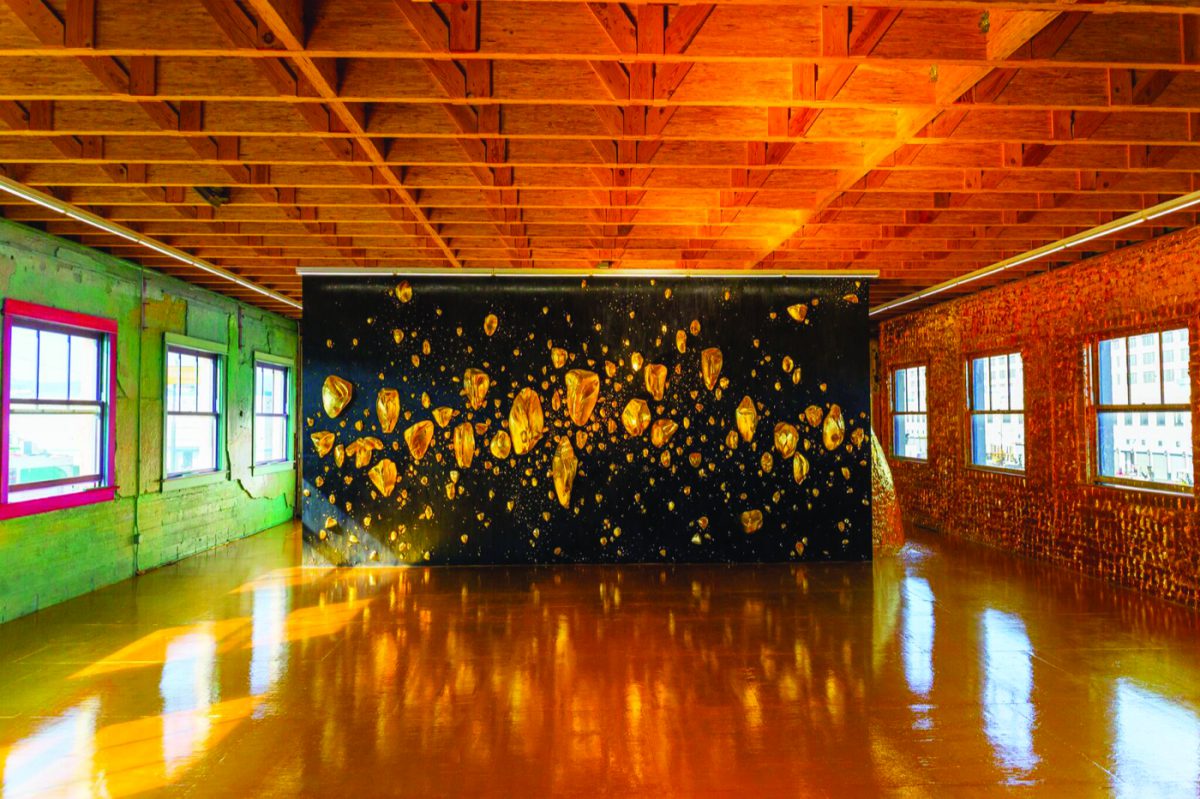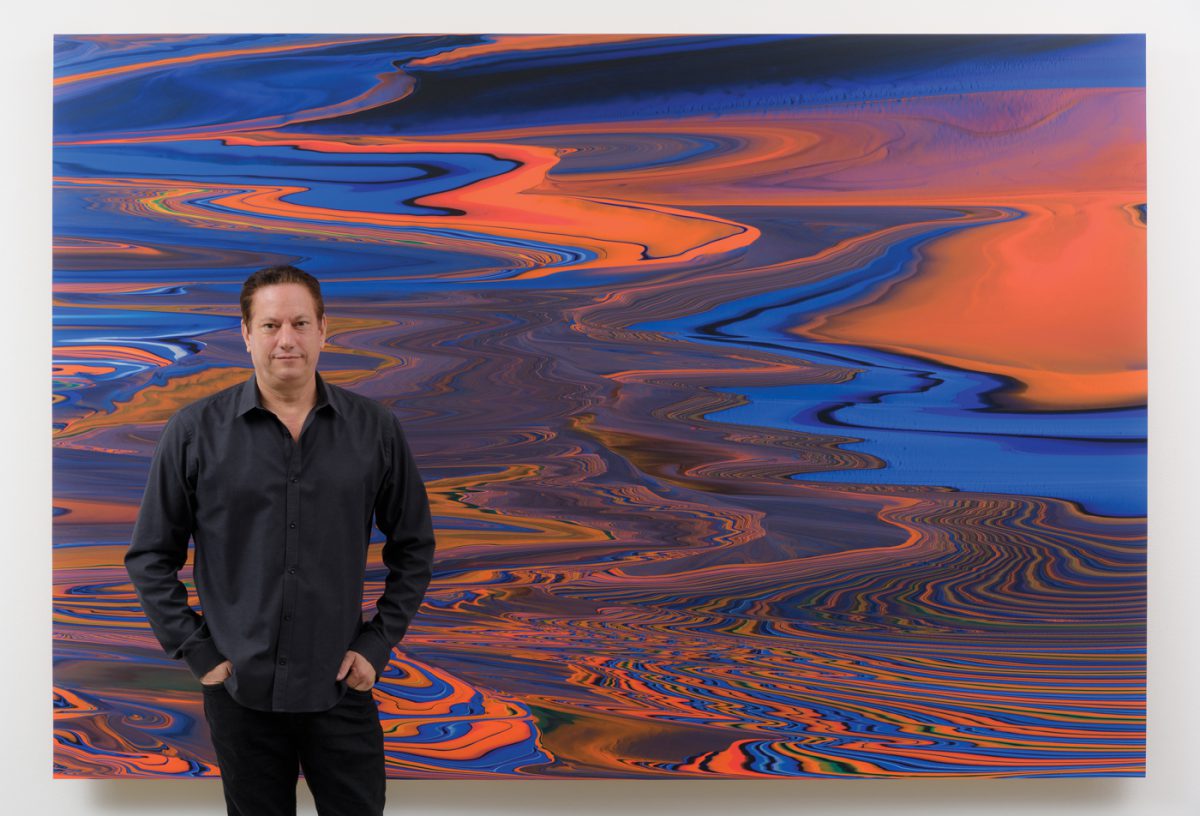Santa Monica College Pete and Susan Barrett Art Gallery will present Andy Moses: A 30 Year Survey, documenting the evolution of the artist’s elusive, non-objective pictorial works. The Venice-based painter has spent the last thirty years perfecting his elaborate process-driven vocabulary, and this exhibition will open on the occasion of his 55th birthday. The show will run from February 11th through March 25th, 2017.
Moses has worked in both New York and Los Angeles and has explored art at the intersection of painting, science, and alchemy. Curated by Barrett Art Gallery Director Marian Winsryg, Andy Moses: A 30-Year Survey will follow the progression of the artist’s style and process in chronological sequence, from his early black and white works produced over a 15-year period in New York City, in which he explored galactic and microscopic imagery through chemical paint reactions, to his most recent vibrantly colored and detailed paintings made in Los Angeles in the last 15-years.
Moses’s paintings are executed in his Venice studio in single uninterrupted painting sessions but are the result of detailed notations, elaborate paint preparations, and lengthy material experiments. Moses must react to the physical processes he catalyzes, given the relatively quick drying times of the materials, and cannot revise the end result, having created irreversible conditions of movement and flow. Though organic stylistically, a mathematical component guides their production as well. Moses has described his process as part painting, part science, and part “garage alchemy,” in which humble materials are transformed completely through process. The works are the result of equal parts physical phenomena, intense focus, and occasional magic.
“Among all the arts, it is the art of alchemy that imitates nature most closely.” – Albertus Magnus
Created through the physical reactivity and interaction of materials rather than through gestural mark making, the dynamic fluid “marks” that striate his works are achieved through a process of gravitational movement and highly controlled dispersions of paint across the surface. Moses floods the polycarbonate ground with acrylic paint mixtures of varying viscosities, combined with pearlescent acrylic interference mediums. His panels are often concave or convex panoramic formats chosen to reinforce the object quality of the works, pushing them into a third dimension. The curvature is both functional, used to create movement in the pouring process, and referential, mimicking the bowed and recessive physical qualities of the earth.
Born in Los Angeles, Moses grew up in Santa Monica with an unavoidable love of sea and sky. The immersive and transcendent quality of the ocean and coastal horizon would manifest in his later works. The son of painter Ed Moses, he attended the California Institute of the Arts in 1979, where he initially enrolled for film and video and then painting in his final year. He studied at that time with Michael Asher, John Baldessari, Barbara Kruger, and Douglas Huebler. He moved to New York City in the early 80’s where he began producing process-oriented works, incorporating silkscreened scientific imagery and newsprint text into meteoric and geological-looking paintings.
In’92 Moses began using powdered pigments with acrylics, creating more gestural and chromatic paintings of primordial landscapes and ancient looking life-forms. These works continued his interest in creating referential, albeit non-objective, abstractions. In 2000 Moses returned to Los Angeles where his work would again shift in response to the environment in which he was working. He would then begin the body of work, which he continues to develop to this day.
Andy Moses says of his work, “I have always been interested in fractal-like patterns that exist in nature, those that repeat on a wide range of scales though never precisely the same. These types of patterns simultaneously suggest both the interconnectedness and complexities of nature.”
Though Moses’s work is non-representational, an allusiveness persists in its reference to natural forms and vistas. Interested in the concept of fractals and their appearance in nature, Moses is drawn to the ways in which self-similar patterns are reiterated on both a macrocosmic and cellular level. The oscillating quality of movement in his paintings recalls the familiar ebb of water, geological topographies, or the waning horizons of sky.











